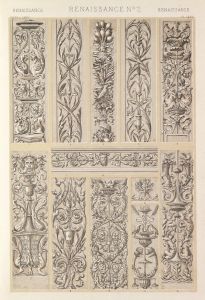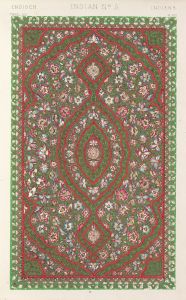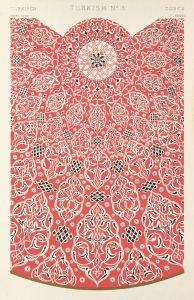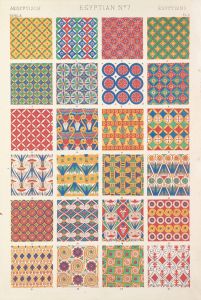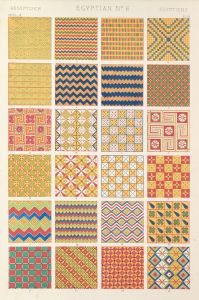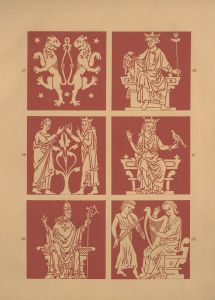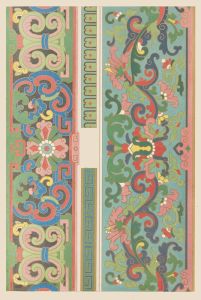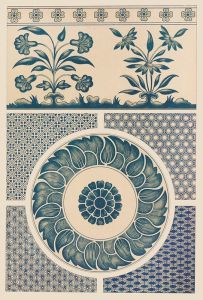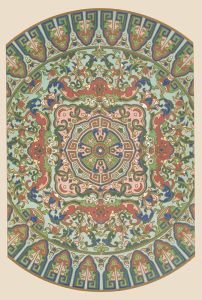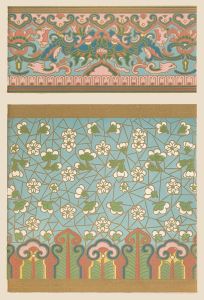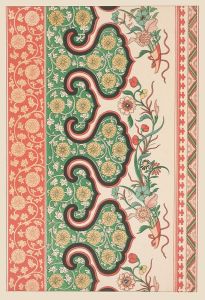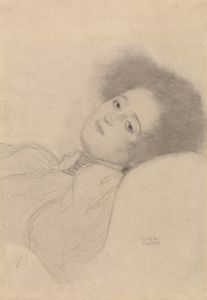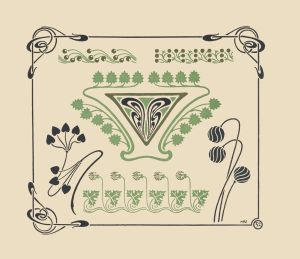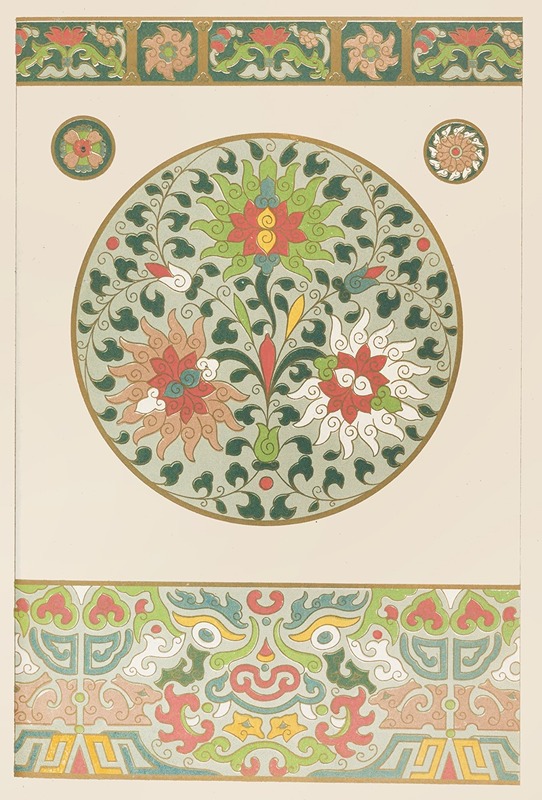
Examples of Chinese ornament, Pl.55
A hand-painted replica of Owen Jones’s masterpiece Examples of Chinese ornament, Pl.55, meticulously crafted by professional artists to capture the true essence of the original. Each piece is created with museum-quality canvas and rare mineral pigments, carefully painted by experienced artists with delicate brushstrokes and rich, layered colors to perfectly recreate the texture of the original artwork. Unlike machine-printed reproductions, this hand-painted version brings the painting to life, infused with the artist’s emotions and skill in every stroke. Whether for personal collection or home decoration, it instantly elevates the artistic atmosphere of any space.
"Examples of Chinese Ornament, Pl.55" is a plate from the influential design book "The Grammar of Ornament," authored by the British architect and designer Owen Jones. Published in 1856, this comprehensive work is renowned for its systematic exploration of decorative arts from various cultures around the world. Owen Jones was a pivotal figure in the 19th-century design reform movement, advocating for the study and appreciation of historical ornamentation as a means to inspire contemporary design.
"The Grammar of Ornament" consists of 100 color plates, each illustrating a different style or tradition of ornamentation. Plate 55 specifically focuses on Chinese ornament, showcasing the intricate and symbolic designs characteristic of Chinese decorative arts. This plate, like others in the book, was created using chromolithography, a method that allowed for the reproduction of vibrant colors and intricate details, which was a relatively new technology at the time.
Chinese ornamentation is known for its rich symbolism and use of motifs that often carry cultural and philosophical meanings. Common elements include floral patterns, mythical creatures like dragons and phoenixes, and geometric designs. These motifs are not merely decorative but are imbued with meanings that reflect Chinese beliefs, such as harmony, prosperity, and longevity.
Jones's work was groundbreaking in its approach to cataloging and presenting these designs. He emphasized the importance of understanding the principles underlying different styles of ornamentation, rather than merely copying them. His book was intended as a resource for designers, architects, and artists, encouraging them to draw inspiration from historical designs while creating new works that were appropriate for their own time.
The inclusion of Chinese ornament in "The Grammar of Ornament" reflects the 19th-century European fascination with Asian art and design, a trend that was part of the broader Orientalism movement. This interest was fueled by increased trade and contact between Europe and Asia, leading to a greater appreciation and incorporation of Asian aesthetics in Western art and design.
Jones's work had a lasting impact on the field of design. By presenting a wide array of cultural designs in a systematic and accessible format, he helped to elevate the status of decorative arts and encouraged a more global perspective in design practices. His emphasis on the study of historical ornament as a foundation for modern design continues to influence designers and educators today.
Overall, "Examples of Chinese Ornament, Pl.55" is a testament to Owen Jones's vision of a universal language of design, where the beauty and complexity of different cultures are celebrated and serve as a source of inspiration for future generations.





